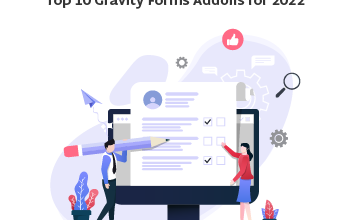14 Principles of Effective Web Design

Research has shown that those websites that are not designed well have poor viewership as well as suboptimal Google analytics metrics (low time on site, low pages per visit, low conversions, and high bounce rates).
So you may ask, what is a good web design?
To help you with this, we have shared with you 14 web design principles that you must religiously follow to make your website attractive, easy to use, engaging, and effective.
Top 14 web design principles to follow to attract viewers
Web design is not science, but an art, because here instead of following through some fixed rules, you have to design a website that would truly reflect your brand value, and is customized for your target audience.
Purpose
When you are in the planning stage, you should be clear about the reason for which you are designing the website.
Furthermore, you should take care that the website meets all the requirements of the end-users.
Clear communication
There should be a proper flow of communication through website design.
To do this properly, you can organize the information you want to put on the website under the headline, sub-headlines, smaller sentences, and bullet points.
Typefaces
Fonts play an important role in improving the readability of the text.
Do not use highly artistic fonts for the text, as it would hamper the readability.
Your font size should be 16px and you should use a maximum of only three types of fonts on your website.
Keep the design consistent
Design consistency is a big issue.
To keep the design of your website consistent, you must use the same kind of fonts, colors, icons, spacing, and layout throughout the website.
This will ensure that your website looks professional which in turn will help in improving your brand image.
Simple page navigation
Navigating to your website should be a piece of cake.
You should ensure that the website is designed in such a way that it is easy for the users to locate the information they want without feeling overloaded with multiple options.
To do this, you can use drop-down menus, sidebar, or sticky navigations to give your website a polished and uncluttered look.
Complementary Color palette
The color you use in your website design helps to set the mood.
Using different colors you can create a rustic, moody, playful in modern feel to your website.
Optimize call to action buttons
Call to action buttons have an indispensable role in a website design.
It has a huge role in helping the user to stay longer on your website.
The call to action buttons should be visible against other important elements in your web design.
This will ensure that the viewer of your website can easily find and click on it to navigate to the other portions of your website.
Visual Hierarchy
Your web design should be logical in addition to aesthetically pleasing to the eyes.
Therefore, the web design should be such that there should be an easy flow in the design so that all the elements in your website need a logical conclusion.
Images
The importance of images to communicate a complex idea or provide information in an easy to understand way cannot be overemphasized.
Therefore, select your photos carefully so that they should fit well with the overall design look of your website and should help in achieving your objectives.
Prioritize Users experience
Your prime focus should be to offer the best user experience to all the visitors to your website.
The website should be designed in such a way that the user finds it interesting and engaging to stay on your website to look at various information available there.
Grid system
We suggest that you use the grid layout in designing your website.
In a grid layout, the horizontal and vertical lines are used as guides to align the elements in your website to create an attractive composition.
This can help in creating a great visual balance in your website design that the viewer will find interesting.
Use symmetry
The symmetric design is time-tested and you cannot go wrong with it.
If you follow a symmetrical design, you will find that your website will look professional and more balanced as the two halves will mirror each other perfectly.
Load time
The load time of your website is very important.
If it takes too long to load your website, then the viewer will get frustrated and go to another website.
To reduce the load time you can use website optimization, and compile the code into the central CSS or JavaScript.
Mobile friendly
Your website should be designed in such a way that it could be viewed optimally over multiple devices with varied screen sizes.
You can adapt the responsive layout while creating your web design so that your website can adjust to different screen widths and give the viewer a complete look at your site.
Conclusion
We hope that you have understood the principles of effective web design.
Apart from these principles, there are various other website design tips that you can consider to create an attractive, user-friendly, and scalable website for your business.
Moreover, whether you are planning to update an existing website or build a new website from scratch, all of these principles are useful to create a web design that is loved by your target audience.





